Get ready, for rodgersia is a member of the saxifrage family, related to bergenia, saxifrage, London pride and astilbe. Members of this family generally have a branching head of small flowers and rodgersia does too.
The flowers are small, without petals, which makes them appear foamy and light, but carried in large numbers on a branching head of flower stems. This large flower structure can be 30cm-70cm in length and it is held well clear of the foliage. The flowers are mostly white in colour, often with a fawn tinge or greenish, and there are some pink-flowered selections.
Although the airy flower heads are quite pretty and offer some useful colour and shape, rodgersia is mainly grown for its large leaves.
Depending on the species, these can be up to 90cm tall and the individual leaflets can be 30cm long.
The different species look quite alike, but are easily separated by the distinctive shape of the leaves.
The most commonly grown is Rodgersia pinnata, which has leaflets in pinnate pattern, that is, opposing each other at the mid-rib, but sometimes these leaflets are held in a hand-shape, the leaflets radiating out.
This species can have a range of colouring–white, yellowish or pink. The variety ‘Superba’ is a lovely warm pink-red colour. This can have brown leaves in spring.
Garden value
Rodgersia aesculifolia means the ‘horse chestnut-leaved’ rodgersia and the leaves are very similar to horse chestnut.
The large leaves of Rodgersia podophylla has leaflets with broad, pointed teeth at the leaf edge, compared to the curving unbroken edge of the leaves of the other two mentioned.
The leaves are smoother on the surface and not heavily veined like the others.
This species has creamy-green flowers in rounded groups. The young leaves are nicely marked with bronze in spring and they turn to shades of red and brown in autumn.
Rodgersia is a spectacular plant in full growth, because of its sheer size and dramatic foliage. But while its main flowering period is in summer, it also makes a fine show of dark, red-coloured leaves and seed-heads in the autumn.
The plant can make 2m or more in width if there is space available, which is more likely in a country garden.
It is a robust plant, with tough leaves and strong stems, competing well with weeds.
Originating in China and Japan, rodgersia likes damp, humusy soil in open woodland and scrubby conditions. While they do not like heavy shade, they will tolerate a fair degree of it if they get some sunshine for part of the day.
They are ideal for a boggy area and great in a bog garden because the foliage is so dramatic and the flowers contribute too.
If the ground dries out in summer, the large leaves will droop badly and look very miserable, so it is imperative that the ground supplies adequate moisture. Plants that are shaded are less likely to wilt. The plant spreads by means of heavy rhizomes and make a dense clump.
Elusive oleander
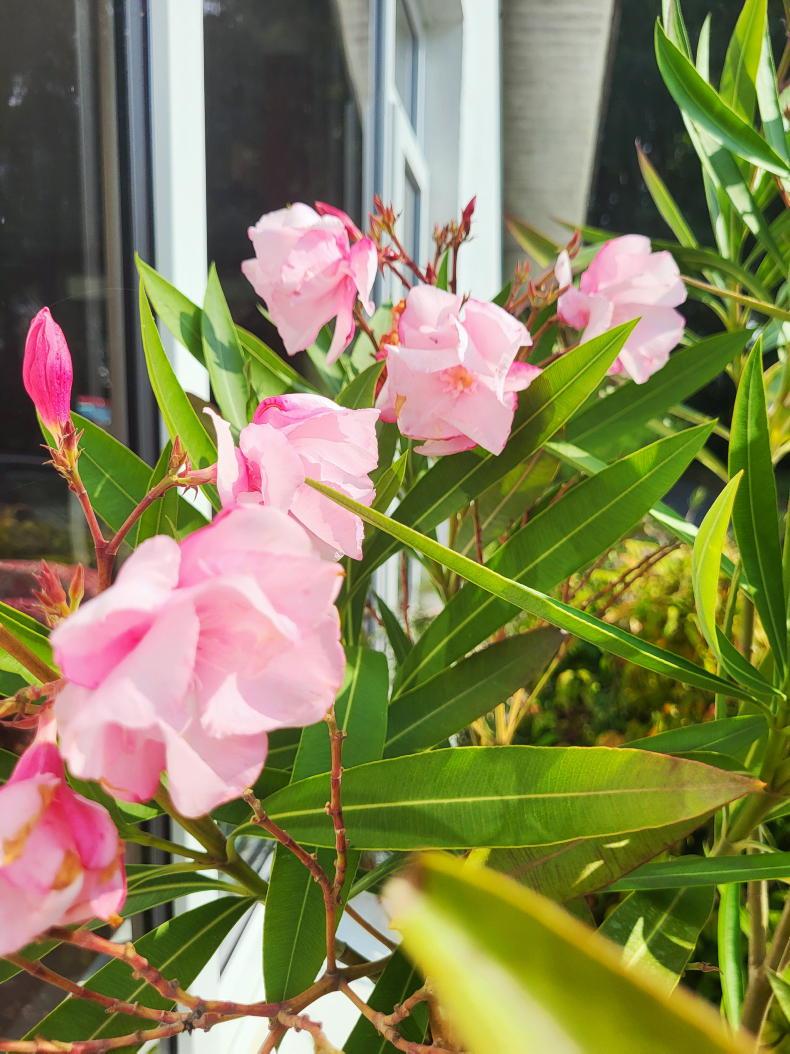
Oleander is well familiar to holidaymakers in Mediterranean climate.
It is rare enough to see oleander grown in pots in Irish gardens outdoors and it is even more unlikely to find this superb shrub growing in the open soil, and not only surviving, but quite remarkably flowering too.
Oleander is well familiar to holiday-makers in Mediterranean climate. It forms a bush about 2m tall and wide. The evergreen leaves are long and narrow leathery and withstand wind in coastal areas of the Mediterranean.
It is native to areas around the Mediterranean, notably Portugal. The colours of the clusters of flowers are mostly red and pink, but there also white and even yellow/orange kinds. The plant is noted for its very sweet scent. Don’t get too close, as it is notably toxic.
Trees, shrubs and roses
Check on wall-trained climbers and ensure their support is solid. Prepare ground for planting shrubs, if not already done. The planting itself can take place now for evergreens, or in
eight or 10 weeks for bare-root deciduous trees. Or planting can be delayed until spring if the weather is wet.
Fruit, vegetables and herbs
Fruit crops can be picked and stored, using flat shelves or trays for pears and plastic bags, left open. Over-mature vegetables should be chopped up and composted. Weeds should be removed and the ground dug over roughly to allow it to weather. Strawberries can be planted now.
Flowers
This is the main time for planting spring bulbs and containers for spring display – the garden shops all have their spring bedding in now. Summer bedding flowers can be removed in preparation for planting spring bedding and bulbs. Perennial flowers can be planted or lifted and divided.
Lawn
Moss control products, such as sulphate of iron, can be applied if moss was a problem last winter and spring. An autumn lawn fertiliser can be used, or a low-nitrogen compound fertiliser. This will maintain some growth through the winter and leave the lawn in good condition coming into spring.
Greenhouse and house plants
Place plants in a bright position and water winter plants, such as Christmas azaleas. Most of the greenhouse crops can be cleared soon – tomatoes, chillies, melons and cucumbers. Throw out any old plants that are past their best or half-dead, because they are a source of pests and diseases.
Get ready, for rodgersia is a member of the saxifrage family, related to bergenia, saxifrage, London pride and astilbe. Members of this family generally have a branching head of small flowers and rodgersia does too.
The flowers are small, without petals, which makes them appear foamy and light, but carried in large numbers on a branching head of flower stems. This large flower structure can be 30cm-70cm in length and it is held well clear of the foliage. The flowers are mostly white in colour, often with a fawn tinge or greenish, and there are some pink-flowered selections.
Although the airy flower heads are quite pretty and offer some useful colour and shape, rodgersia is mainly grown for its large leaves.
Depending on the species, these can be up to 90cm tall and the individual leaflets can be 30cm long.
The different species look quite alike, but are easily separated by the distinctive shape of the leaves.
The most commonly grown is Rodgersia pinnata, which has leaflets in pinnate pattern, that is, opposing each other at the mid-rib, but sometimes these leaflets are held in a hand-shape, the leaflets radiating out.
This species can have a range of colouring–white, yellowish or pink. The variety ‘Superba’ is a lovely warm pink-red colour. This can have brown leaves in spring.
Garden value
Rodgersia aesculifolia means the ‘horse chestnut-leaved’ rodgersia and the leaves are very similar to horse chestnut.
The large leaves of Rodgersia podophylla has leaflets with broad, pointed teeth at the leaf edge, compared to the curving unbroken edge of the leaves of the other two mentioned.
The leaves are smoother on the surface and not heavily veined like the others.
This species has creamy-green flowers in rounded groups. The young leaves are nicely marked with bronze in spring and they turn to shades of red and brown in autumn.
Rodgersia is a spectacular plant in full growth, because of its sheer size and dramatic foliage. But while its main flowering period is in summer, it also makes a fine show of dark, red-coloured leaves and seed-heads in the autumn.
The plant can make 2m or more in width if there is space available, which is more likely in a country garden.
It is a robust plant, with tough leaves and strong stems, competing well with weeds.
Originating in China and Japan, rodgersia likes damp, humusy soil in open woodland and scrubby conditions. While they do not like heavy shade, they will tolerate a fair degree of it if they get some sunshine for part of the day.
They are ideal for a boggy area and great in a bog garden because the foliage is so dramatic and the flowers contribute too.
If the ground dries out in summer, the large leaves will droop badly and look very miserable, so it is imperative that the ground supplies adequate moisture. Plants that are shaded are less likely to wilt. The plant spreads by means of heavy rhizomes and make a dense clump.
Elusive oleander

Oleander is well familiar to holidaymakers in Mediterranean climate.
It is rare enough to see oleander grown in pots in Irish gardens outdoors and it is even more unlikely to find this superb shrub growing in the open soil, and not only surviving, but quite remarkably flowering too.
Oleander is well familiar to holiday-makers in Mediterranean climate. It forms a bush about 2m tall and wide. The evergreen leaves are long and narrow leathery and withstand wind in coastal areas of the Mediterranean.
It is native to areas around the Mediterranean, notably Portugal. The colours of the clusters of flowers are mostly red and pink, but there also white and even yellow/orange kinds. The plant is noted for its very sweet scent. Don’t get too close, as it is notably toxic.
Trees, shrubs and roses
Check on wall-trained climbers and ensure their support is solid. Prepare ground for planting shrubs, if not already done. The planting itself can take place now for evergreens, or in
eight or 10 weeks for bare-root deciduous trees. Or planting can be delayed until spring if the weather is wet.
Fruit, vegetables and herbs
Fruit crops can be picked and stored, using flat shelves or trays for pears and plastic bags, left open. Over-mature vegetables should be chopped up and composted. Weeds should be removed and the ground dug over roughly to allow it to weather. Strawberries can be planted now.
Flowers
This is the main time for planting spring bulbs and containers for spring display – the garden shops all have their spring bedding in now. Summer bedding flowers can be removed in preparation for planting spring bedding and bulbs. Perennial flowers can be planted or lifted and divided.
Lawn
Moss control products, such as sulphate of iron, can be applied if moss was a problem last winter and spring. An autumn lawn fertiliser can be used, or a low-nitrogen compound fertiliser. This will maintain some growth through the winter and leave the lawn in good condition coming into spring.
Greenhouse and house plants
Place plants in a bright position and water winter plants, such as Christmas azaleas. Most of the greenhouse crops can be cleared soon – tomatoes, chillies, melons and cucumbers. Throw out any old plants that are past their best or half-dead, because they are a source of pests and diseases.






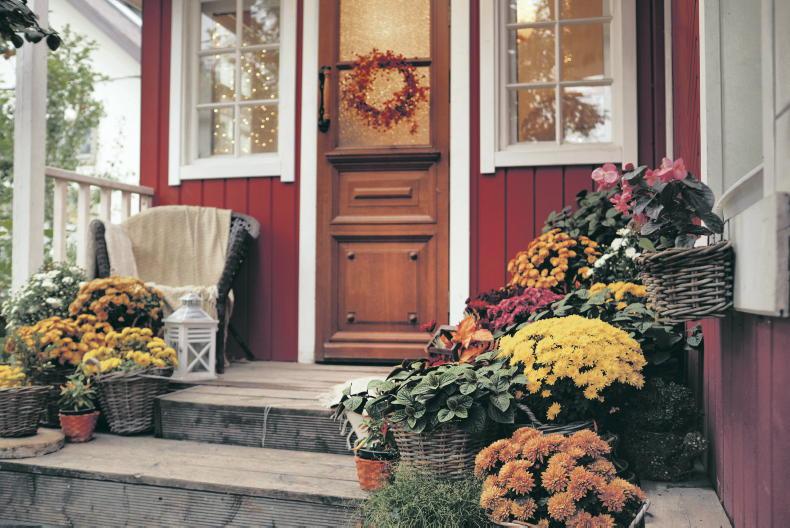
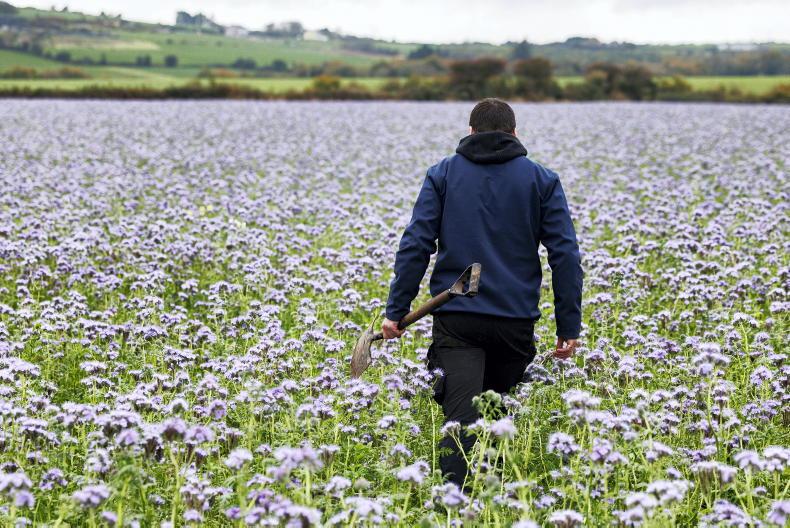
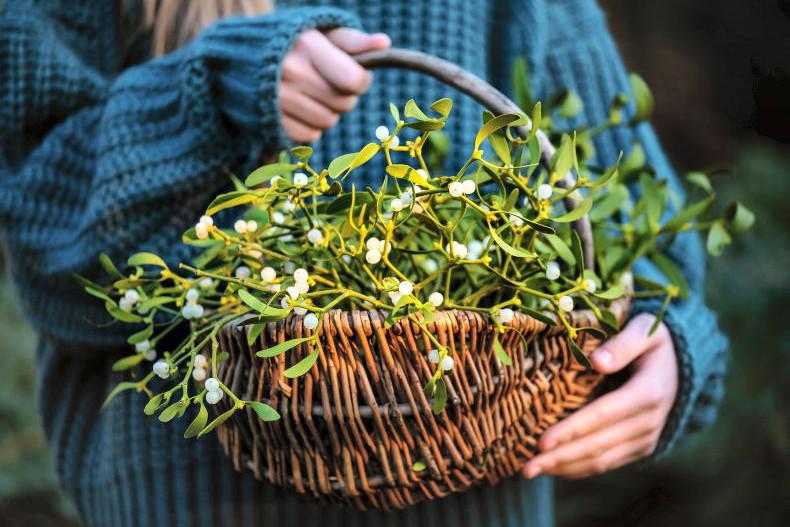
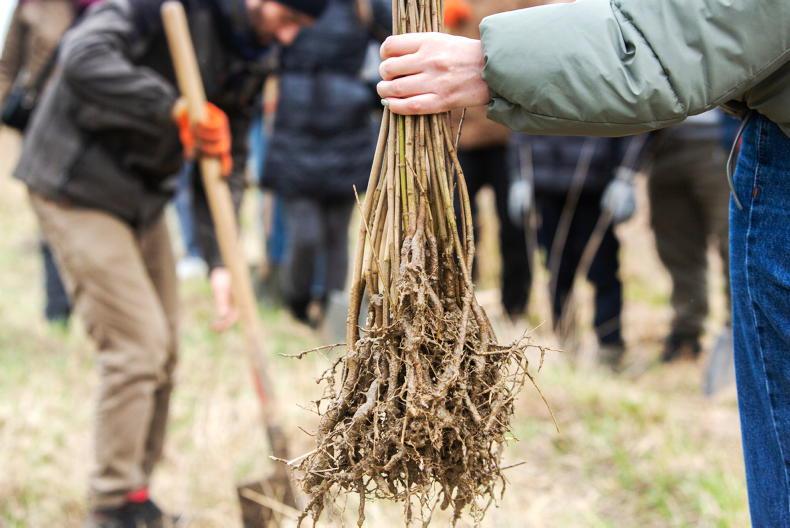
SHARING OPTIONS